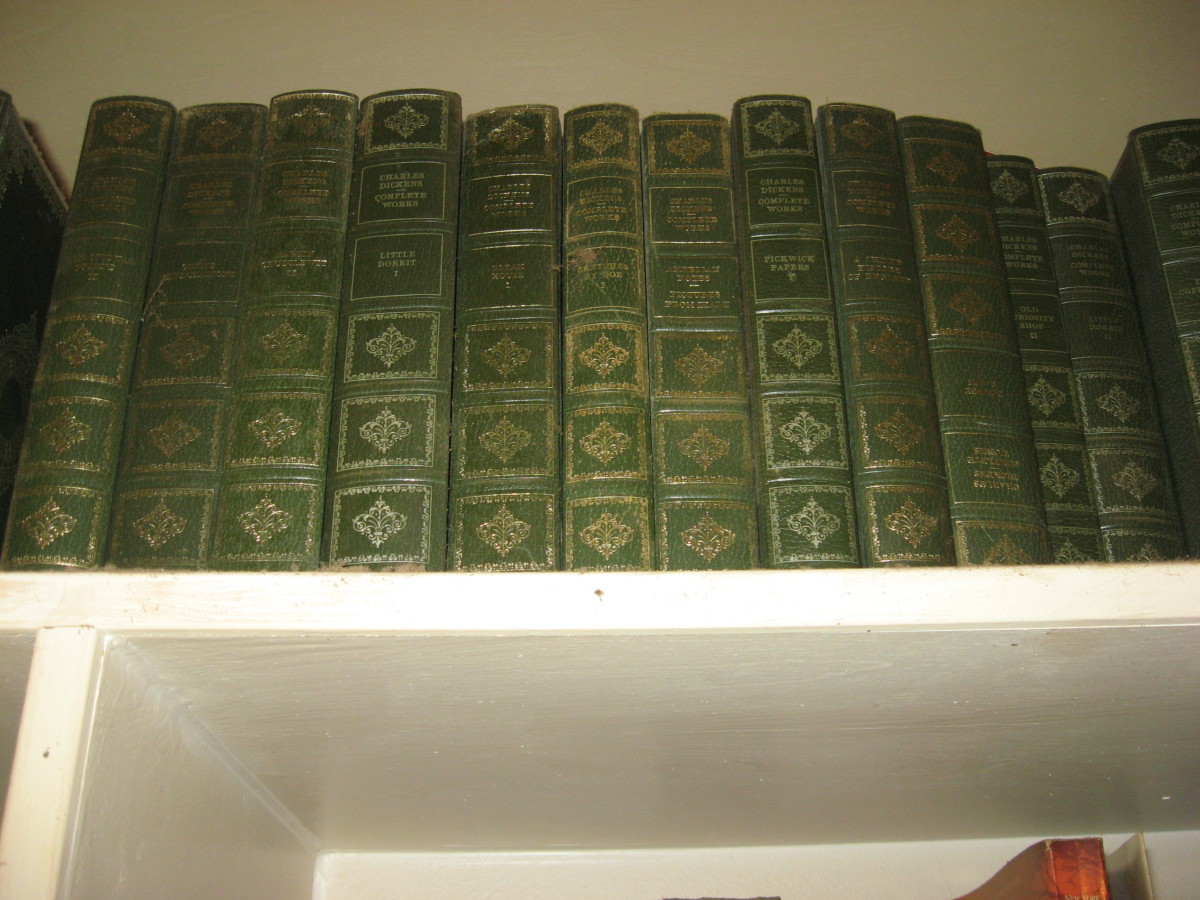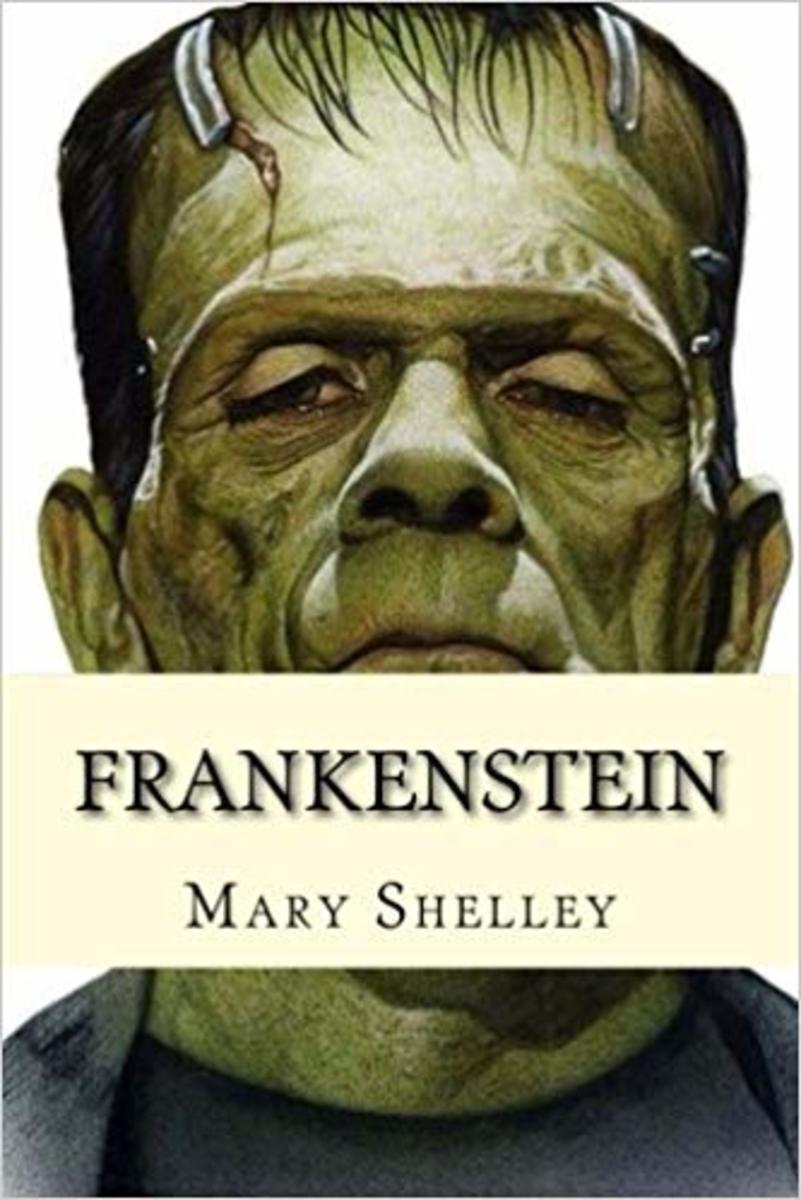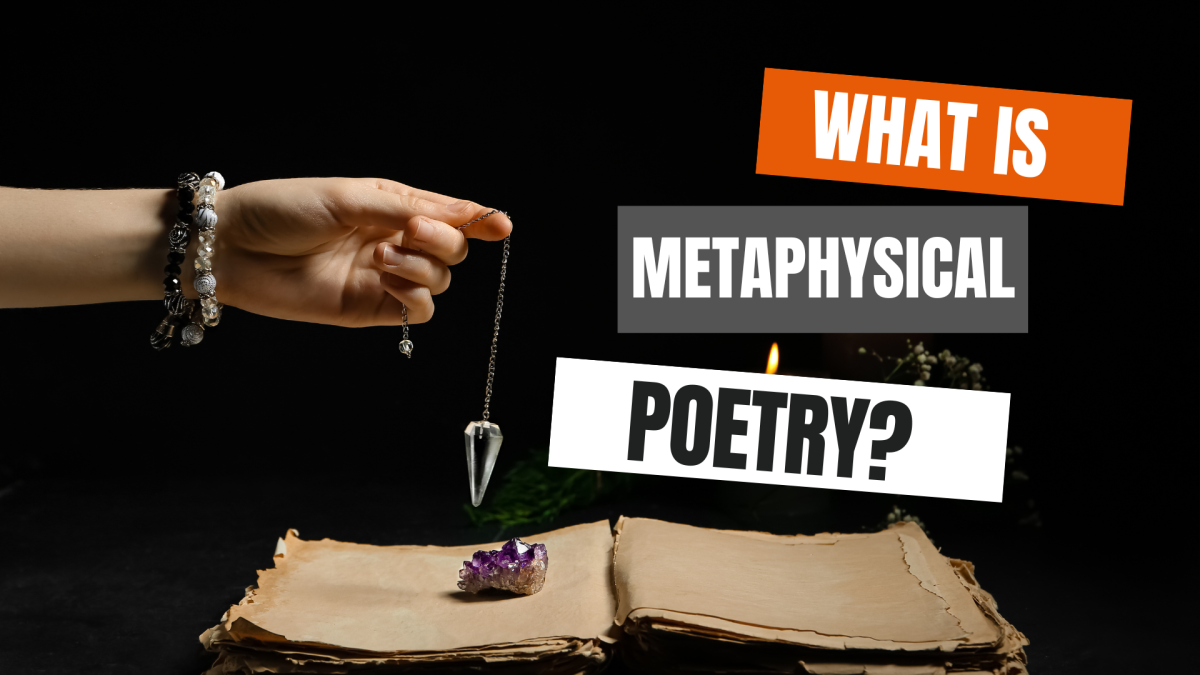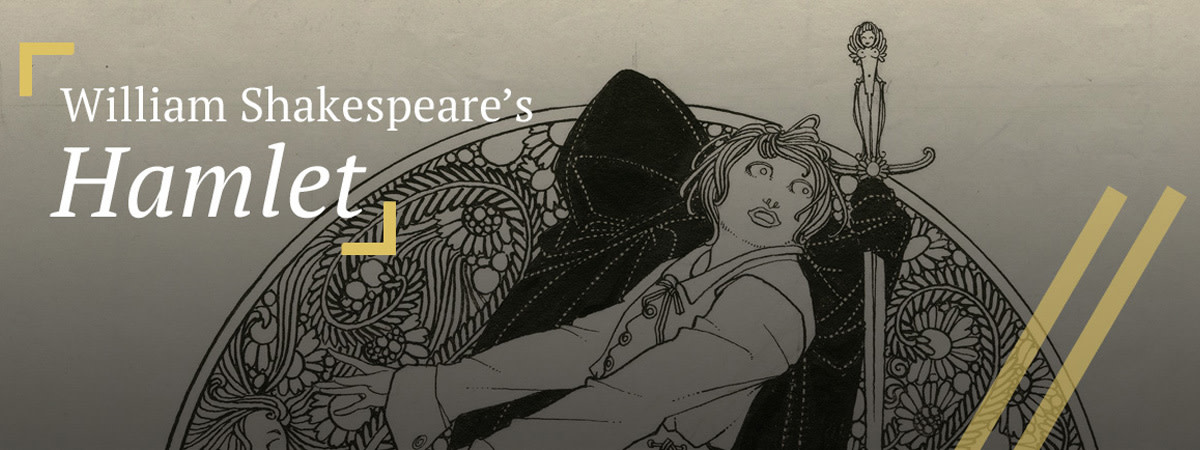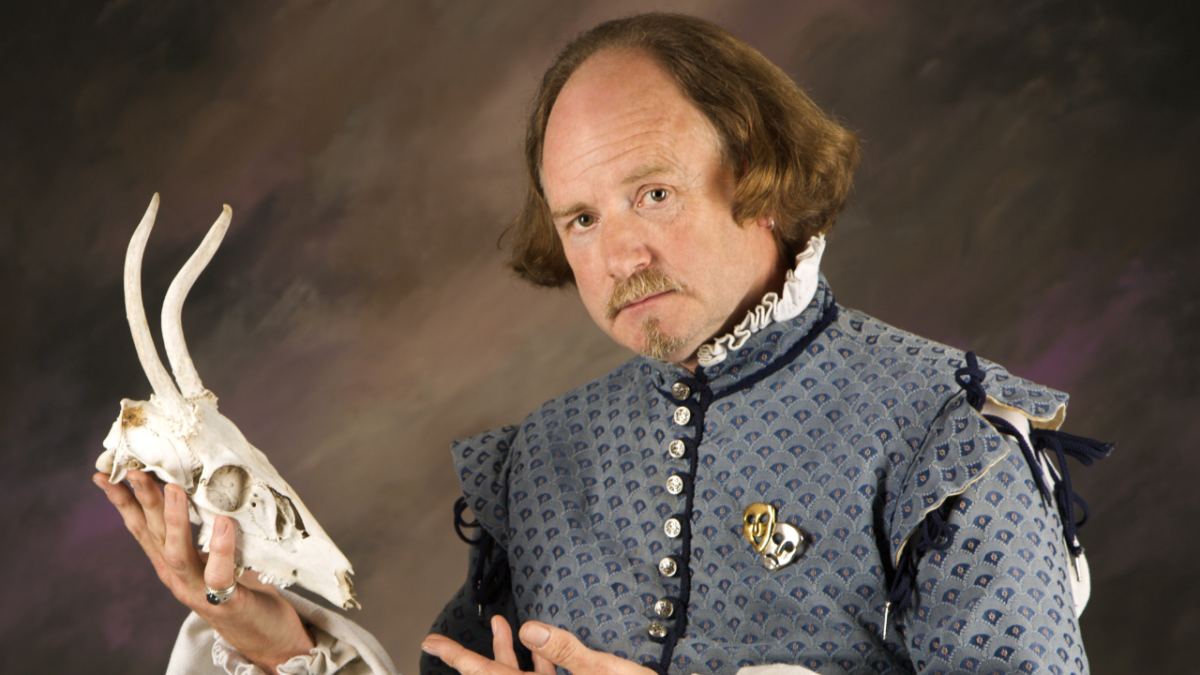Gods and Creations - Parallels Between Creator and Creation in Victorian Literature
Gods and Creations
The notion of God as the creator and the centre of faith has prevailed through time as a thing that is not to be questioned. In this article, I will attempt to show how two texts from the Victorian era paint a picture of two representations of a God-like figure, or a creator, and how this figure handles his responsibility as a creator. More to the point this thesis will try to denote how we can say that these two works create God in the image of "man" through moral implications. How have these two writers created characters that considers the relationship between creator and creations?
In the bible, God has many merciful characteristics, but also vengeful ones. Therefore, one of my primary literature sources will be the Bible itself. In addition to this, as the Bible cannot successfully be used as a historical source, my secondary literature will provide me with research already done on the notion of hate, evil and the God-figure and create both questions and answers related to the thesis statement,
My article will consist of reflections around my theme within to two different Victorian texts, a poem and a novel.
In the first part of my article I will reflect upon the notion of the creator-figure in Mary Shelley's "Frankenstein", specifically with focus on Victor Frankenstein's role as a "creator-figure". As an alternative title, Shelley proposes the book may also be called "The Modern Prometheus". Prometheus is credited as being the one who made the male humans out of clay, much as Frankenstein created his monster and as Caliban created a bird of clay. Although there are different versions to the myth of Prometheus, the most widely accepted one is the one of him as a friend of man. After he decided to choose the side of "man" instead of Zeus' – the high God, in a dispute over man's right to fire he was severely punished. Frankenstein has, in a sense, also chosen to disobey the rules and guidelines of his God, and his fate is marked similarly horrible to Prometheus'. These initial excerpts I will use are connected to his feelings of love and responsibility towards his creation, which changes when he sees it come to life for the first time.
I had worked hard for nearly two years for the sole purpose of infusing life into an inanimate body. For this I had deprived myself of rest and health. I had desired it with an ardour that far exceeded moderation; but now that I had finished, the beauty of the dream vanished, and breathless horror and disgust filled my heart. Unable to endure the aspect of the being I had created, I rushed out of the room and continued a long time traversing my bedchamber, unable to compose my mind to sleep. (Shelley, (1823) p. 98-99)
Oh! No mortal could support the horror of that countenance. A mummy again endued with animation could not be so hideous as that wretch. I had gazed on him while unfinished; he was ugly then, but when those muscles and joints were rendered capable of motion, it became a thing such as even Dante could not have conceived. (Shelley, (1823) p. 101)
The notion of Frankenstein as "the modern Prometheus" creates the image of Frankenstein as the creator-figure in this horror story. These excerpts will serve as an introductory explanation of how Frankenstein – though depicted as a God-like creator of his monster – possesses human features such as fear, disappointment and self-doubt in the moments after his monster has first come to life. By using this as my starting point, I can bring back the topic of Caliban's questions of Setebos' nature.
The second part of my article will reflect around this same matter in the poem "Caliban Upon Setebos" by Robert Browning, with the creator-figure being Setebos. The poem is written from the point of view of the creature Caliban, a lesser, monstrous creature taken out of the play "The Tempest" by William Shakespeare. Caliban reflects over his position beneath his god Setebos, and marks that he has many common characteristics with him. One example is how he can act in a similar manner towards creatures that are lesser than him. The excerpt I have chosen to start my research into the matter of my research question, takes place at a moment during his monologue where he is beginning to sound bitter. He also contemplates how Setebos could not be all powerful since he seems not to be able to make another creature like himself. Caliban later takes this to mean that Setebos has not created himself either, and reflects upon a being even more powerful than him, the one he later refers to as the "Quiet".
56. He could not, Himself, make a second self
57. To be His mate; as well have made Himself:
58. He would not make what He mislikes or slights,
59. An eyesore to Him, or not worth His pains:
60. But did, in envy, listlessness or sport,
61. Make what Himself would fain, in a manner, be -
62. Weaker in most points, stronger in a few,
63. Worthy, and yet mere playthings all the while,
64. Things He admires and mocks too, - that is it.
65. Because, so brave, so better though they be,
66. It nothing skills if He begin to plague.
This excerpt of Caliban's monologue brings up the theme of the creator and how Caliban views the reasons Setebos could have for creating what he has created. Are we creations just playthings? Did he create us in his image because he could not create a perfect equal? The question of what kind of morality the creator is supposed to have towards his creations surfaces and makes this a good starting point for my research.
My secondary literature will present several more quotations and questions to be answered or debated. Some of the secondary sources include the articles "Caliban's Mind" by John Howard, "Wild Man and Savage Believer: Caliban in Shakespeare and Browning by Kenneth MacLean, "Caliban Upon Setebos" by C.R. Tracy, "Frankenstein, The Problem of Evil and The Irenaean Theodicy" by Meghan Kuhr.
This far in the process, the reflections I have made points in the direction of a depiction of these "creator-figures" as very human. In this sense, the relationship between the God-figures created by Shelley and Browning could seem to be closely related to "man's image", and therefore somewhat transparent and overlapped in relation to the notion of human nature.
Before I begin my analysis of the two texts and their possible parallels to the word of Christianity, I will explain some of the notions of God and his characteristics as the Creator. This will help me point to the parallels I may find when analysing the two texts. In Genesis, the first book in the Bible, the story of how God created humans, you will find the famous phrase: "So God created mankind in his own image, in the image of God he created them; male and female he created them." (Gen. 1.27) This has led to the assumption that since God is good, and man is created in his image, humans are created naturally good. According to this opinion, humans' natural response to injustice and evil in the world is to answer with goodness. This is in direct conflict with the notion of the Problem of Evil, a theory that questions the ultimate goodness of God himself. The problem of God's goodness arises when you simply view the world he created, that is supposedly good. "God called the dry ground “land,” and the gathered waters he called “seas.” And God saw that it was good." (Gen. 1. 10) Why then, you can ask, is the ground occasionally shaking and the water occasionally flooding, causing destruction and devastation to humans? One possible solution to this dilemma is depicted in John Hick's Irenaean theodicy. This theodicy explains that "God's divine purpose is for people to develop as moral and spiritual beings" (Kuhr 1), and that this would not be possible in a world without evil and suffering. This means that the fore-mentioned destruction and devastation that God allows to harm humans, have the purpose of pushing humans to strive to live their lives with kindness and moral conduct. The article "Frankenstein, The Problem of Evil and The Irenaean Theodicy" by Meghan Kuhr, will serve as one of the bases for my further discussion as Hick's opinion of the Problem of Evil is that evil isn’t a problem, but rather a helpful tool for humans to grow as spiritual and moral beings who will naturally steer their lives towards goodness. In his book The Reason for God: Belief in an Age of Scepticism, J. T. Keller tackles a lot of topics where he has collected opinions from people who do not believe in God and proceeds to explain how their arguments are flawed. In his second chapter, he attempts to explain how a good God can allow suffering, and he turns to several of the same reasons that J. Hick presents in his theodicy, mainly that the notion of evil is there for a reason. He chooses to present the story of Joseph, from Genesis (37-45) where evil and suffering paints his path towards a better life of morality and spirituality, as if this better life is a reward for his perseverance through the suffering he had to endure (Keller 36). Keller also collected stories from people in his parish, who told him that though none of them "are grateful for the tragedies themselves, they would not trade the insights, character, and strength they had gotten from them for anything". (Keller 37) This is also compatible with the views expressed by Hick.
Though as this may sound reasonable to Keller and the people that has experienced suffering and come out on the other side, so to speak, this may not be the case for everyone living through suffering and evil. Many people experience that when evil enters their lives, the most natural response is to turn to violence or revenge (Kuhr 1-2). This is shown in many cases where people who have grown up with violence in their lives, as often ends up bringing violence into their own homes (Kuhr 9). This brings us to Victor Frankenstein's Creature. Hick has defined humans as "[…] ethical – that is gregarious as well as intelligent animals, able to realize and respond to the complex demands of social life" (Kuhr 6). Kuhr then draws an important parallel for this essay; Frankenstein's Creature is "articulate, graceful and capable of understanding human complex emotions" (Kuhr 7), and therefore he is compatible with what Hick and Keller have defined as important characteristics of humanity. The Creature is treated with neglect and he suffers because he is created, something he had no power to control. According to Keller and Hick, this should help him develop a sense of morale and sympathy for others, though as the plot of the book continues, Meghan Kuhr's predictions come true. In his misery, he understands that humans will never treat him kindly, and he lashes out towards them. He feels lonely and desperate enough to seek out the maker, who abandoned him, and ask him to make him a mate so that he will not be all alone in a world where everyone is repulsed by him. This is a profound wish, shared by many humans as we are in the end pack animals. Most people yearn for someone to spend their life with, who does not judge who they are, and that will stay by their side. When Victor Frankenstein regrets the work he has been doing, creating yet another monstrosity, and destroys her, the Creature does not have a profound moment of clarity where he grows as a moral and spiritual being, he responds with rage and swears his revenge on his maker for his evils. He becomes the monster that Victor saw in the excerpt above, when his life's work finally came to life and he kills Victor's childhood-friend and true love.
The relationship between Victor and his Creature as one of the Creator and Creation – relationships, represent the aspects of the relationship between God and humanity that is the focus of the criticism referred to as the problem of evil. The relationship between them reflect the struggle between the different aspects of family. On the one hand, you have a sense of belonging to the person who made you, which is a strong bond. However, when this bond is destroyed by a betrayal of trust, the concept of belonging and family becomes something ugly, rather than beautiful. This is also reflected in Christianity, when humans lose their faith towards the almighty and good God. Though, when comparing this relationship with the one between Setebos and Caliban, there is one apparent difference. Victor is human, in every sense of the word. He has taken it upon himself to create a life he has no control over and he fears his own creation. He feels regret and disappointment towards them both. Setebos is not depicted this way in Robert Browning's "Caliban Upon Setebos".
The relationship between Setebos and Caliban is created on an entirely different basis than the one between Victor Frankenstein and his Creature. These two characters are originally from Shakespeare's play "The Tempest," and given a continued story in Robert Browning's poem "Caliban Upon Setebos". The poem is a dramatic monologue, performed by the creature Caliban, a kind of monstrous creature, similar to Frankenstein's Creature in some ways. Caliban strikes the readers as an evil creature that has malevolent intentions in mind, but through the way he is treated with neglect, you grow to feel a strained sort of sympathy for this character. The poem is the product of Caliban's thoughts while spending time in his home, the swamp world that surrounds him, and he imagines how his two deities, one of them being Setebos are, as creatures and as creators. Setebos is the god his mother has told him about, the one that was made by a higher deity, "the Quiet", who also created the world. Caliban's mother told him that Setebos does what he can with the world the Quiet created, but Caliban creates his own theories based on what is surrounding him. He believes that Setebos created the creatures that inhabits his swamp world, and that he has cruelly designed them to be plagued by weaknesses they have been born with. This suggests that Caliban's faith in the goodness of Setebos is weak. When comparing this to the relationship between Frankenstein and his Creature, we can see a similar lack of faith in the goodness of the creator, as the Creature harbours a deep hatred towards Frankenstein because he was put upon this earth with weaknesses, like the ones described by Caliban. John Howard presents an argument by Robert Langbaum in his article Caliban's Mind, explaining how Caliban's contemplation around these deities came to be. His argument postulates that the meaning of Caliban is;
"the life-persistence, the biological vitality and cunning which Caliban finds in the swamp world and in what he deduces from the swamp world about the nature of the god, Setebos. The meaning is Caliban as he stands revealed in what he sees and thinks." (Howard, p. 3)
This argument fuels the assumption that Caliban's mind is one of lesser intelligence than the average human's. This is also a common view of Frankenstein's creature in popular culture, as countless movies have been made, and most of them picture it so. However, looking back on the arguments made by Meghan Kuhr and John Hick, about the necessary qualities required for being a part of what we call humanity, we could see that in the character's original (literary) form, Frankenstein's Creature can easily be defined as a part of humanity. (Kuhr 6) However, when comparing Caliban to these same criteria, we can notice a difference in the creatures' moral characteristics. Browning's characterization of Caliban is a good representation of him, when compared to the character he is in "The Tempest". He is cruel and selfish, petty and even murderous. Though, this is not a thesis comparing Shelley's Frankenstein with Shakespeare's "The Tempest", and the fact is that even though the character is very similar in the latter and the poem by Browning, there is one crucial difference that sets the monstrous creatures apart. In Shakespeare's play, Caliban has redeeming qualities, but in Browning's poem these have been removed, creating a fundamentally awful character. (Howard 4)
The God in this poem, Setebos does not get a chance to present himself for what he is, if he even exists in this story. The image created about him is the result of a being of lesser intelligence and vile nature, and because Setebos is believed by Caliban to have been the creator of the creatures that inhabit the world, what does that say about how Caliban views his creator? Of course, there is the chance that Caliban is oblivious to the fact that he is a horrid creature that in his core, is "cruel as nature itself (Howard p. 4)". This would create a kind of irony over the situation, where Caliban views his creator as something horrible and evil, whilst not realizing the fact that they are similar in this sense. Although, he does reflect upon the powers of Setebos by pointing out that he can treat beings lesser than himself in a manner that is similar to how he thinks Setebos is treating him. This points towards an understanding of the idea that a God creates man in his image (Gen 1. 27). Although, is Caliban fully a man? According to Hick's theodicy he is not, though he has the ability to feel, he is according to Browning incapable of remorse. Browning himself has called the creature Caliban "a fool and a clown", and a being out of the lower evolutionary scale. (Howard p. 5)
Earlier in this essay I pointed to Caliban's reflections over the reasons Setebos could have for creating creatures. He wonders if Setebos, in a fit of sorrow or rage created creatures somewhat like himself, because he could not create a perfect equal. Creatures like Caliban and fully developed humans are all equipped with free will, but also with weaknesses.
58. He would not make what He mislikes or slights,
59. An eyesore to Him, or not worth His pains:
60. But did, in envy, listlessness or sport,
61. Make what Himself would fain, in a manner, be -
62. Weaker in most points, stronger in a few,
63. Worthy, and yet mere playthings all the while,
This excerpt reflects how Caliban suspects that the creation of man came to be. Setebos made them within a framework that would satisfy his rage over the fact that no creature he made would be equal to him, so instead he chose to revel in man's suffering. Looking back at the creation of Frankenstein's Creature, we can point to the fact that some parallels may be drawn between this god Setebos and Victor Frankenstein. His urge to create something did not originate in the urge to create something that he would dislike or be an eyesore to him. He suffered through years of work to create something he believed would be a revelation and something he could pride himself on. Though when his work was completed and the Creature opened its yellow eyes, Frankenstein was repulsed by the sight of it. This Creature was not his equal, he was horrid to look at and had the composure of a monster. The young doctor fell into deep despair because of these facts, and he neglected his creation. This is where the parallel between him and Setebos may fall short. Setebos' reaction to the fact that he could not create an equal threw him into a fit of rage, according to Caliban, and he turned evil and spiteful. Victor Frankenstein felt his brilliant mind slip away into paranoia and regret, and when he was requested by his creation to make another, he could not bring himself to do it. The faith in store for both him and his creation would from here on out become a tragedy of revenge, death and loss, while Setebos, found an outlet for his rage through evil towards his creations.
So how have these two writers created characters that considers the relationship between creator and creations? Through my research I have analysed the relationships between the creators and creations of these two texts. My preliminary conclusion was that the nature of the God-figures created by Shelley and Browning could seem to be closely related to "man's image", and therefore somewhat transparent and overlapped in relation to the notion of human nature. Through my analysis, this has proven not to necessarily be true.
While we can consider Victor Frankenstein as a creator figure who can be closely related to this notion, this is somewhat apparent, given that he is in fact human. However, the notion of "man's image" doesn’t refer simply to race, but rather to certain qualities, which we can see have affected Victor Frankenstein through the course of his life. He has explored his free will, he has experienced heartache and suffering and he in in close contact with his emotions through the duration of the last parts of the novel. Although, when studying the relationship between him and his creation, the Creature, his role as a Creator is challenging for him and he is thrown into paranoia and fear. This is a poor reflection of the notion of a Creator, when compared to the holy image of God as a creator. According to the Bible, the creator will love his creations and be all-powerful and all-good. These are criteria that are not met by the young doctor, who wanted to create life out of death.
My preliminary assumption, that both of these creator figures have human qualities that may cause their natures to overlap with the ones that are common to human nature itself, is only partly factual. When taking into account the god Setebos, we can see that he harbours many of the qualities possessed by Caliban, his creature. Even though Caliban seems only to be partly aware of this fact, this essentially means that Setebos do not possess the required qualities of morale and ethical thinking as presented in John Hick theodicy. This is because Setebos' nature is a product of Caliban's thought-process and he seems unable to imagine his god to be good, possibly because he is incapable of this same quality. This would mean that the Creator-characters created by these two writers are different in one important way; that they are not equally affected by what we call human nature. The Creations are also divided by this fact. While Frankenstein's Creature is a monstrosity to behold, he is capable of complex emotions and moral and ethical thinking. Caliban, as presented in Shakespeare's play "The Tempest" could possibly also match this description, thought through Robert Browning's work, he has lost his redeeming qualities, rendering him a truly monstrous being, incapable of breaking out of his own selfish ways. This makes him a lesser being than the Creature created by Frankenstein. MacLean even proposes that there is a general assumption that Caliban can be referred to as what is called a literary "Noble Savage-" or a "Wild Man-" character (MacLean 3-4)
Finally, when looking at these two pairs compared to one another, I have found that the nature of Frankenstein and Setebos, and their roles as creators are different in the ways of their reasons for becoming creators. Frankenstein's urge to create his Creature started out as a loving thing. He truly loved his work, enough to deprive himself of sleep and food in his obsession in making his Creature come to life. Much like the story of when God created the earth and everything on it, in Genesis. It was as a promise of a dream come true, though when Frankenstein was finished, the dream turned into a nightmare. Setebos, on the other hand, is explained by Caliban as a product of rage and sorrow. He could not make himself a perfect equal, no matter his powers and so he became a creator of the beings of the world, out of spite. He decided instead to create flawed creatures, to see them suffer, perhaps as he suffered upon finding that he would always be alone and without an equal. Frankenstein's Creature was hence made because of love, while Caliban was made because of rage. Considering these facts, the two writers have created characters that are fairly similar when glanced upon, but that are fundamentally different when considering the notion of human nature, upon closer studies. Perhaps in some ways, the perfect representations of the love of God and the wrath of God, both important aspects of Him.
Works Cited:
Biblegateway.com. The Holy Bible. New International Version (NIV).
Browning, Robert. "Caliban Upon Setebos". 1864, London
Harvard, John. "Caliban's Mind". West Virginia University Press, 1963
Keller, J., Timothy. The Reason for God: Belief in an Age of Scepticism. Dutton, 2008.
Kuhr, Meghan. "Frankenstein, The Problem of Evil and The Irenaean Theodicy." Janua spohia. N.p., n.d. Web. 06. March 2017. <http://januasophia.cs.edinboro.edu/articles/2011/Human%20Tendency%20DONE%20done.pdf>.
MacLean, Kenneth. "Wild Man and Savage Believer: Caliban in Shakespeare and Browning." West Virginia University Press, 1987. Victorian Poetry, Vol. 25, no 1.
Shelley, Mary. Frankenstein (: Or the Modern Prometheus). Lackington, Hughes, Harding, Mavor & Jones, 1818
This content is accurate and true to the best of the author’s knowledge and is not meant to substitute for formal and individualized advice from a qualified professional.
© 2019 Madelen Norheim-Johansen


